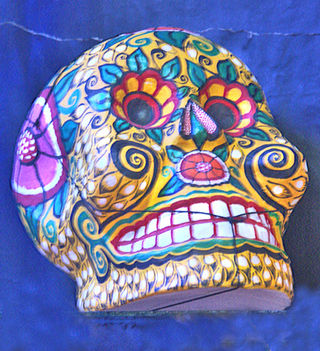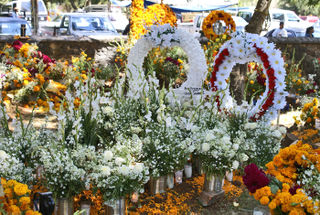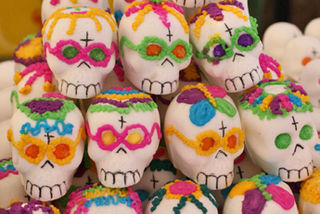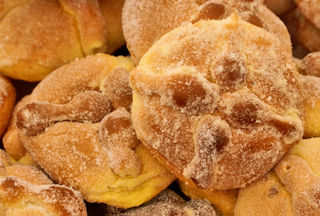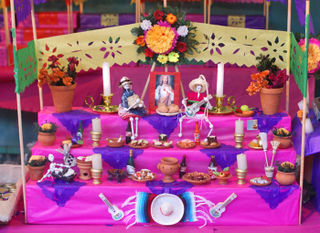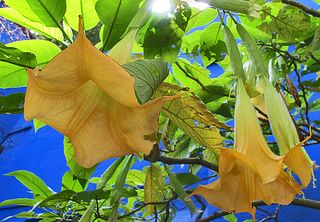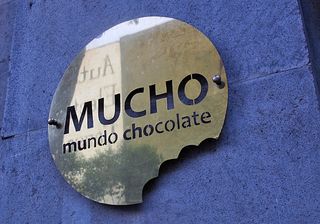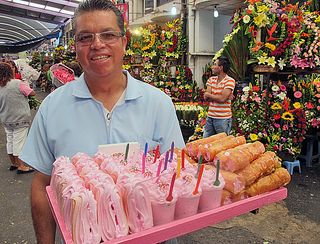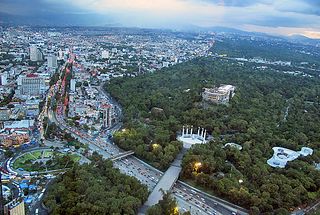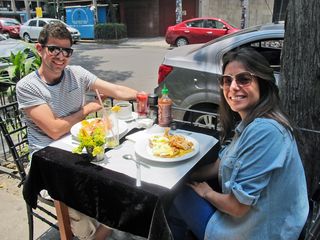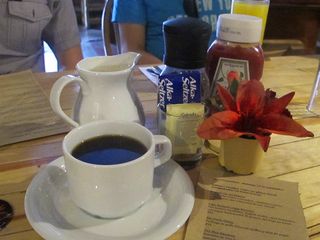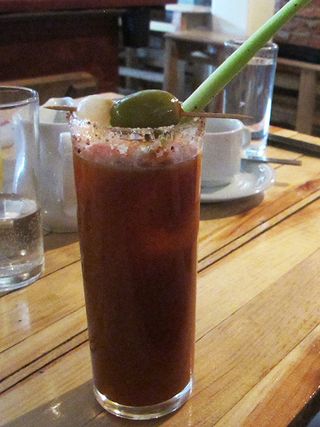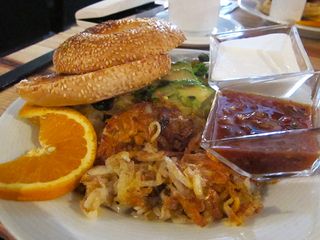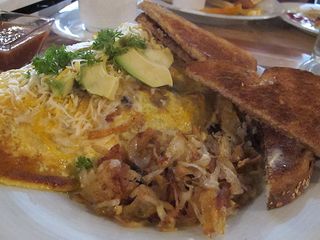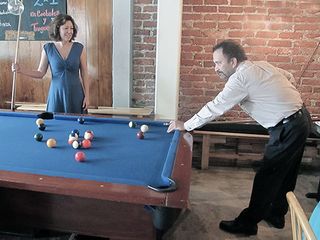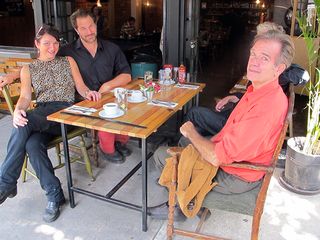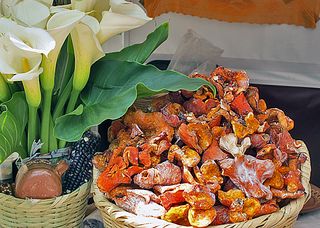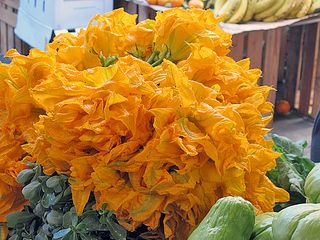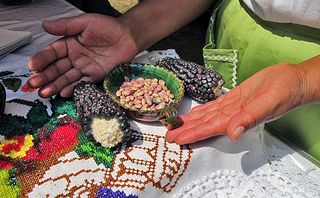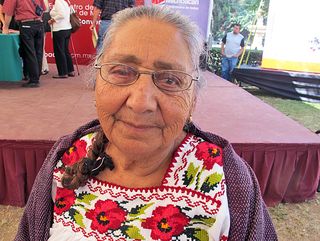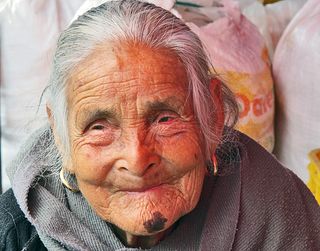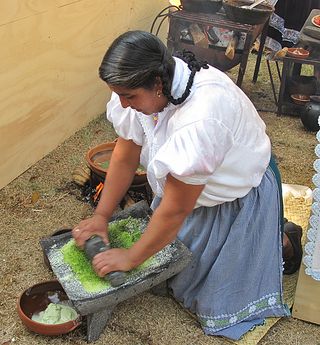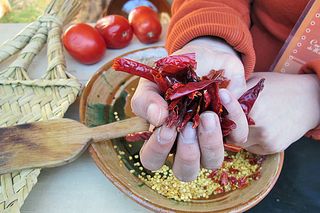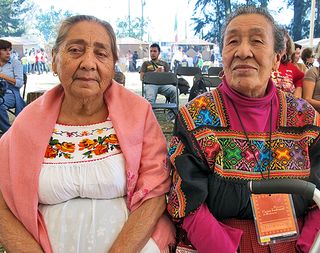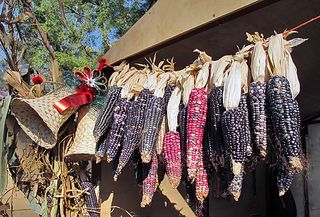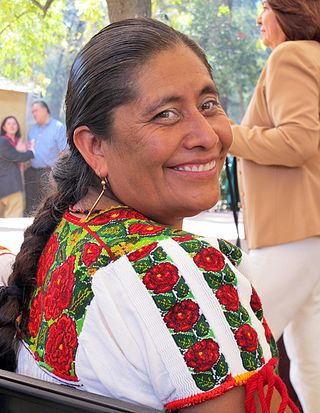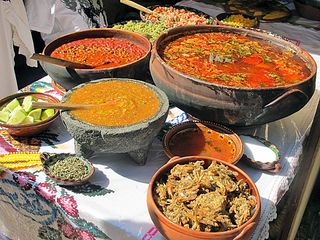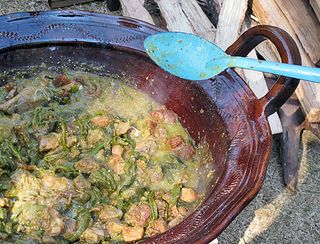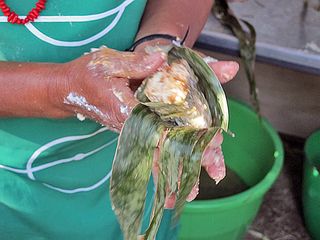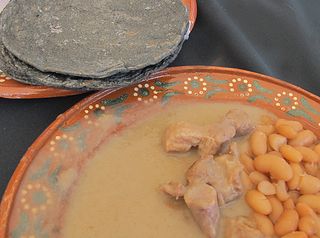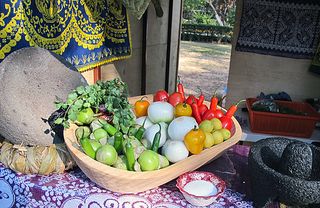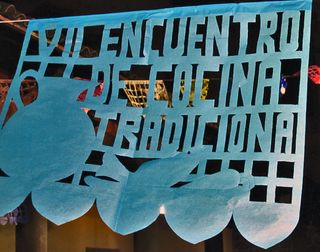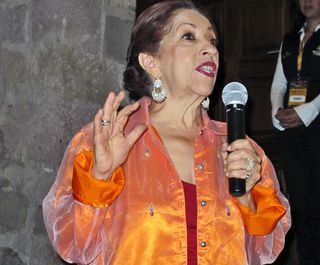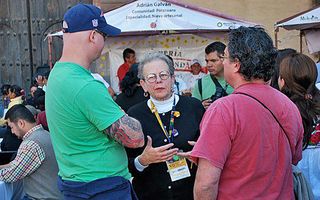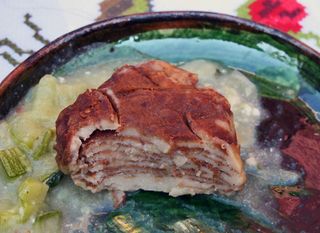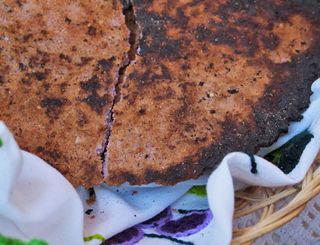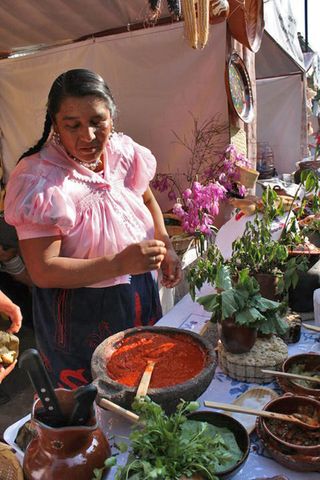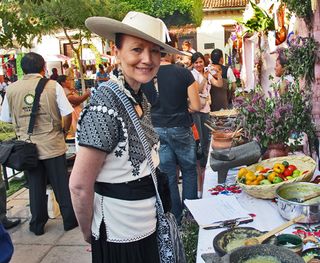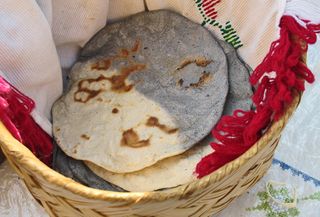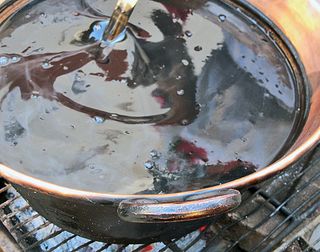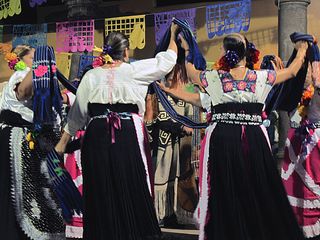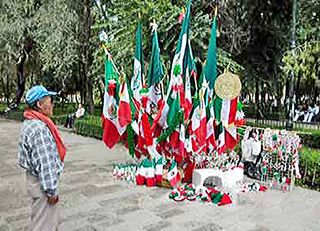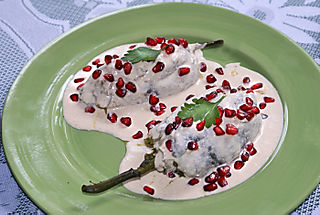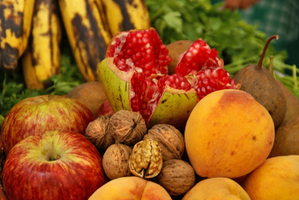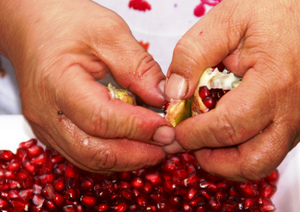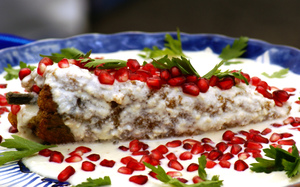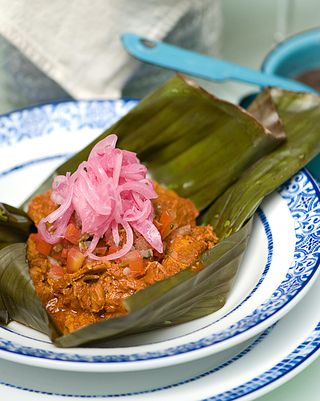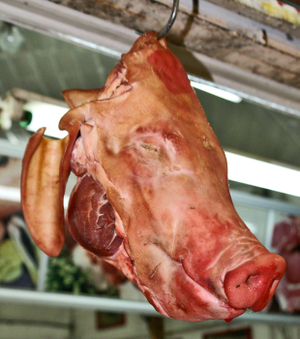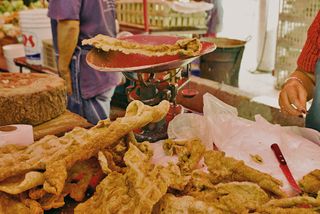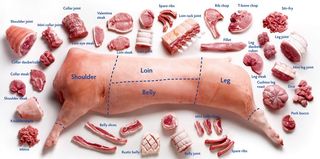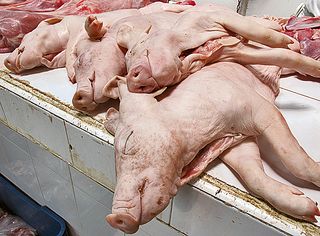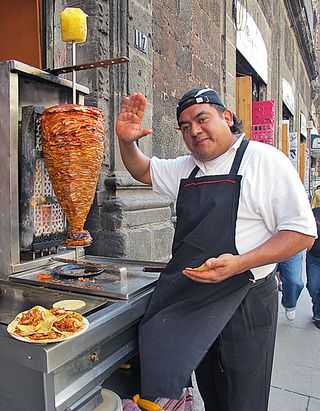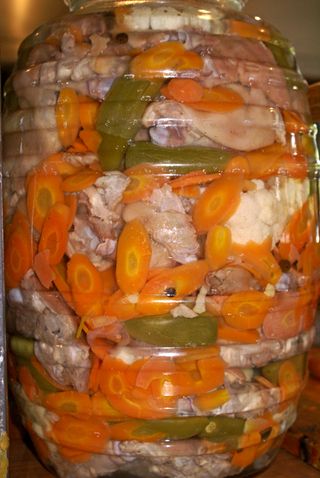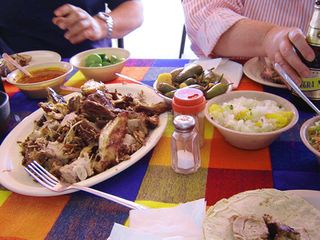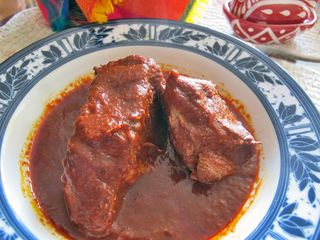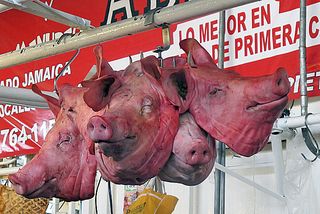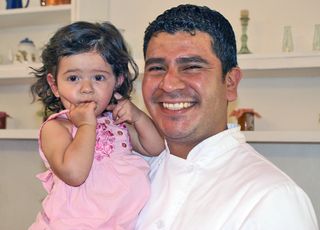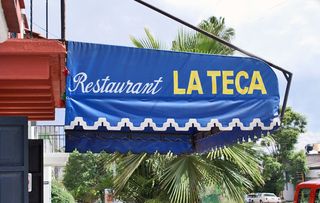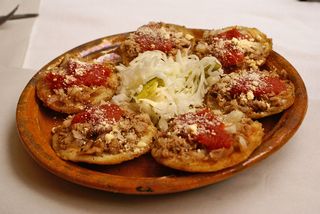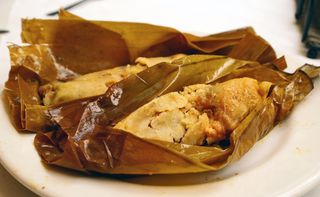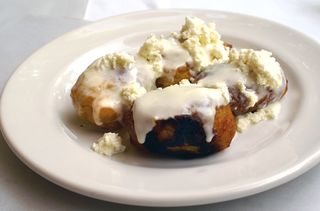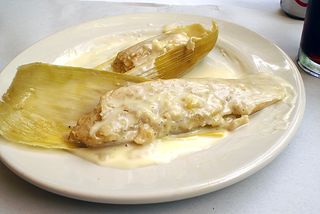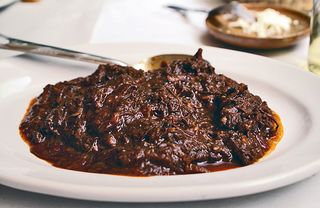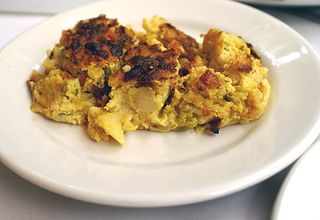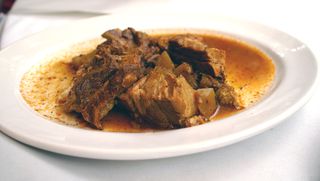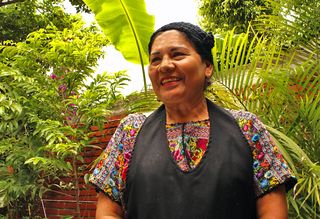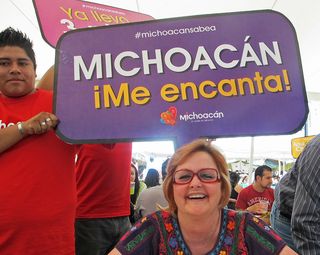
The look on nearly every face at the 10th annual Encuentro de Cocina Tradicional de Michoacán was the same grin sported by Mexico Cooks!' long-time friend Gayla Pierce. An inveterate lover of Mexico and its food, Gayla hails from San Diego, California. This was Gayla's first year to attend the festival and it's easy to see how she felt about it: two thumbs up and exactly what the sign says: I LOVE Michoacán! The young man holding the sign above Gayla's head was one of a team that roved this year's festival eating area with several different signs.

For the first time this year, the stage was set as a typical Michoacán kitchen, this one in the style of Tzintzuntzan. Some of the festival judging took place on stage, with one or another of the home cook contestants talking to the crowd about their dishes. In addition, the this stage was also the backdrop for the festival's invited speakers. Click on any photo to enlarge it for a better view.
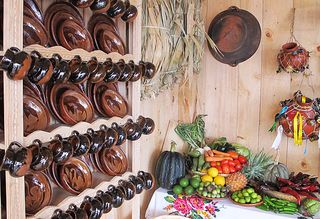
The left-hand corner of the kitchen. On the table are typical fruits and vegetables from Michoacán, and on the shelf you see the regional pottery of Tzintzuntzan. In this case, the design is light and dark brown, with a swan in the middle of each plate. Tzintzuntzan is also famous for black and green pottery with similar designs, and cream-colored pottery with dark brown figures drawn onto it.
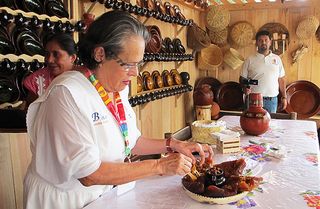
Foreground, 2013 festival judge Carmen 'Titita' Ramírez Degollado, guiding hand behind Restaurante El Bajío in Mexico City. Behind her and to the left is one of Michoacán's greatest home cooks, Antonina González Leandro of Tarerio, Tzintzuntzan, Michoacán. Titita is tasting Antonina's competition preparation of traditional calabaza en tacha (winter squash cooked in heavy syrup).
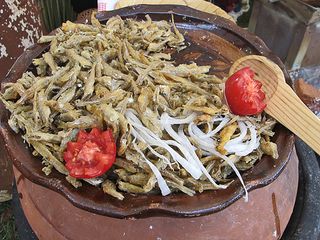
Here's another of Antonina's dishes: these are charales (tiny fish, about the size of your little finger). In this case, they are fried whole and eaten with a sauce. Mexico Cooks! confesses to not being a fan of charales, but most everyone else in Mexico loves them.
These two Purépecha women, both masters of their regional cuisine, prepare fresh, hand-made tortillas for the hordes that lined up at their booths. The 55 women who came to cook at the festival broke attendance records this year, receiving more than 20,000 people over the course of the 3-day event.
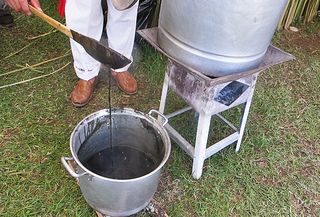
This, readers, is a regional sweet atole made from burned corn silk. It's called atole de chaqueta and it is meant to be thick and black, just as it is in the photo. Atole is a hot drink made from either milk or water, thickened with corn masa (dough), and flavored with seasonal fruits or vegetables. Sweet atole is normally drunk either for breakfast or for supper, accompanied by pan dulce (Mexican sweet bread), but there are also savory atoles that are wonderfully rich and delicious. My particular favorites are atole de guayaba (guava) and atole de habas (fava beans), one sweet and the other savory. Or wait, maybe my favorites are atole de zarzamora (blackberry) and this atole de chaqueta. Or…I left out atole de tamarindo (made of tamarind pulp)! The list goes on!
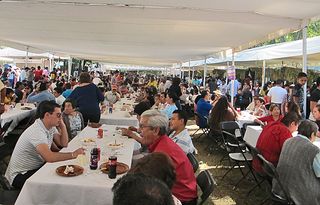
Just a portion–and a small portion, at that–of the crowds of people who showed up for the Saturday of the 10º Encuentro de Cocina Tradicional de Michoacán. As far as the eye could see, people were lined up for big plates of regional Michoacán food, hundreds were sitting at every available table, and more people kept coming through the gates. The festival does not charge admission and it's not the sort of place where you get just a taste of this or that. Here, the marvelous cooks serve full meals on real pottery dishware with real silverware. You buy tickets to exchange for your meal(s); if you have tickets left over at the end of the weekend, take them back to the ticket booth to exchange for money.
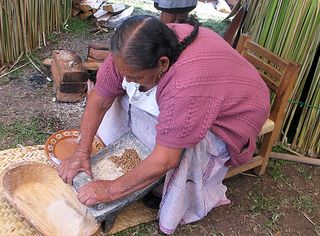
The woman in the photo is Sra. Jovita Gil Arácuaro from Patamban, Michoacán. She is grinding wheat, not corn, to make a mole de trigo y lentejas (mole made of wheat and lentils). You can see that the freshly ground wheat falls into a batea (wooden bowl) in front of the grinding stone. Sra. Gil told me that she is 78 years old–and still grinding wheat on the metate (the three-legged volcanic stone grinder with its metlapil, volcanic stone rolling pin). Younger women kneel on the petate (woven reed mat) in front of Sra. Gil, but a woman her age sometimes sits on a low chair to grind corn, seeds, spices, cooked beans, or toasted chocolate beans. The work requires enormous upper body strength and a lifetime of practice.
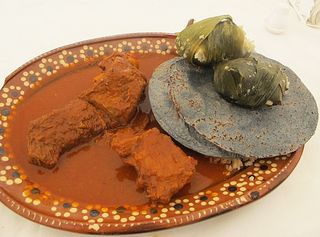
This was Mexico Cooks!' year to try new dishes at the Encuentro. The meat and sauce are birria, in this case, a long-cooked preparation of beef. I've frequently eaten birria de chivo (made of goat) and birria de borrego (made of lamb), but this style beef birria was new to me. Sra. Esperanza Galván of Zacán, Michoacán prepared this according to her mother's recipe. The dish is sweet, salty, spicy, and just redolent with fragrance and flavor. Sra. Galván has realized her most cherished dream: she and her daughters have opened their own restaurant in Zacán. I'd go to Zacán just to have another plate of this birria. It's served here with blue corn tortillas and two corundas: small unfilled tamales, another Michoacán regional specialty.

For several years, our housekeeper in Morelia occasionally asked me if I'd like her to bring me an iguana from the rancho (farm) to cook. No, thank you. No? Umm..no. For all that time, I was guilty of contempt prior to investigation. On the Saturday of the Encuentro, Sr. Eloy Velázquez López told me he'd have freshly prepared iguana in his booth the following day and I would surely want to try it. Umm…thank you so much for the offer. On Sunday afternoon, friends and I had eaten our meal and were sitting at our table enjoying the passing scene–and suddenly Sr. Velázquez was standing in front of me! "How would you like your iguana, Señora? In mole, or in caldo (broth)? This time, there was no escape. I chose the caldo, so as not to mask the flavor of the animal with a heavy sauce. My friend Gayla and I swore we would at least taste it, so as not to offend Sr. Velázquez. Lo and behold, iguana is delicious–really delicious–and it tastes (I swear to you) like chicken. What you see in the soup plate is the hind-quarters of the animal, accompanied by caldo, a chile güero, some carrots, and a piece or two of chayote. I'd eat it again any time, and I'm sorry I let so many iguanas slip through my fingers in years gone by.
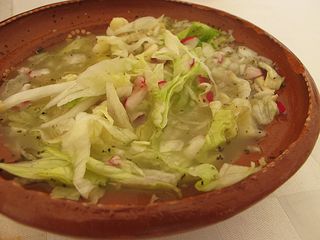
Pozollilo is similar to the more-familiar pozole. The major difference is that this pozolillo is made from fresh corn kernels; pozole is made from nixtamal-ized dried maíz cacahuatzintle–dried field corn that is soaked and simmered in water and cal (builder's lime) to remove each kernel's hard covering. The nixtamal-ization process allows the corn to soften and 'flower' (expand to a popcorn-size kernel) and allows the human body to access corn's vital nutrients during digestion.
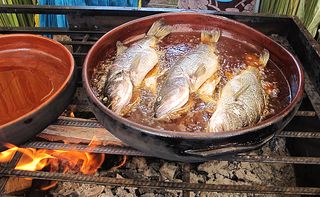
Beautiful fresh Michoacán trout sizzles in a clay cazuela (multi-purpose cooking dish) over an open flame.
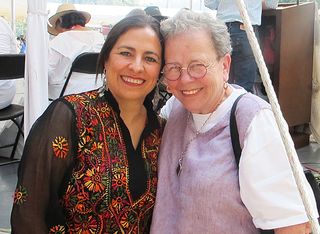
My very dear Morelia friend Alma Cervantes Cota and I, just after Alma's excellent conference, Michoacán: Flavors with a Story. Each of the 2013 conferences was filled with fascinating information about little-known, recently researched aspects of Mexico's cuisine. Alma spoke about nearly-forgotten aspects of Michoacán's regional cuisine. Ricardo Muñoz Zurita spoke about his research into all but unknown varieties of chiles.

Rosalba Morales Bartolo (left) won honorable mention for her Ceremonial Fish for Holy Week. Sra. Rosalba receives her award from Lilia Malandra, on the right in the photo. The theme of the 2013 Encuentro was El Platillo Cuenta una Historia: The Dish Tells a Story.
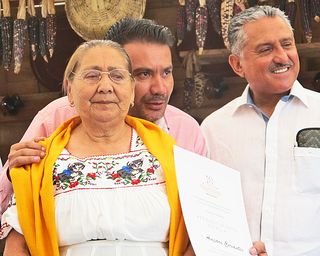
Sra. Amparito Cervantes of Tzurumútaro, Michoacán, receives a lifetime achievement award. Doña Amparito, now nearly 90 years old, said, "My mother taught me all she knew of culinary arts and I've always loved the kitchen. Since I'm from the country, I married–and well, you have to know how to cook, but you also have to know how to sow crops, and cultivate them, and harvest them. Doing that, you just get grabbed by the pleasure of it. Now, I teach others how to do it." Sra. Cervantes still loves to come to the Encuentro to cook for all of the attendees. To her right in the photo is Michoacán's Secretary of Tourisim, Roberto Monroy, García, who presented the award to doña Amparito.
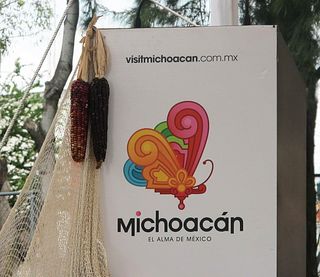
Michoacán, the soul of Mexico. We look forward to seeing you at the 11th Annual Encuentro de Cocina Tradicional de Michoacán. Don't miss it: the dates are October 3, 4, and 5th, 2014. Mexico Cooks! would be happy to guide you through the festival, explain regional ingredients and food preparation for you, and introduce you to a world of wonder in beautiful Morelia, Michoacán.
Looking for a tailored-to-your-interests specialized tour in Mexico? Click here: Tours.
